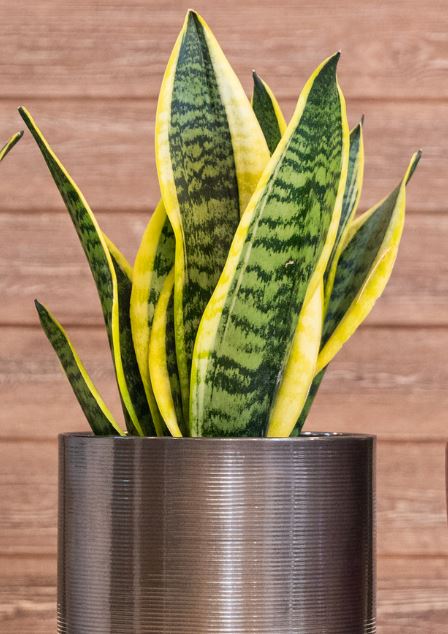5 House Plants That Like Low Light
In the world of indoor gardening, not every home is blessed with abundant sunlight streaming through its windows.
For those of us with spaces that lean towards the dim side, fear not – there are houseplants that not only survive but thrive in low-light conditions like in a bathroom or bedroom.

Whether you’re adorning your office desk, sprucing up a room with minimal natural light, or simply seeking green companions that don’t demand a sunbathing session every day, this list is tailored for you.
Join us as we explore five resilient houseplants that happily embrace the subtle charm of low light, bringing a touch of nature to even the most shadowed corners of your living space.
House Plants That Like Low Light
1. Snake Plant (Sansevieria):
Known for its adaptability, the snake plant can tolerate low light and irregular watering. It’s a popular choice for indoor spaces and is often recommended for beginners due to its low-maintenance nature.

2. Pothos (Epipremnum aureum):
Pothos is a versatile and hardy plant that can thrive in various light conditions, including low light.
It features cascading vines with heart-shaped leaves, making it a visually appealing choice for hanging baskets or as a trailing plant on shelves.

3. ZZ Plant (Zamioculcas zamiifolia):
ZZ plants are known for their resilience and ability to tolerate low light and neglect. They have glossy, dark green leaves that add a touch of elegance to any space.
ZZ plants are excellent choices for offices or rooms with minimal natural light.

4. Spider Plant (Chlorophytum comosum):
Spider plants are adaptable and can thrive in low to bright, indirect light. They are known for their arching leaves and are considered air-purifying plants, making them a popular choice for homes and offices.

5. Peace Lily (Spathiphyllum):
Peace lilies are well-suited for low-light conditions and can even thrive in shaded areas.
They produce elegant white blooms and are effective in improving indoor air quality. Keep in mind that while they tolerate low light, they may produce more flowers with increased light exposure. Learn how to care for a Peace Lily.

Shade loving house plants FAQ’s
While most shade-loving plants prefer indirect or low light, completely windowless rooms may pose a challenge.
Consider using artificial light sources, such as fluorescent or LED grow lights, to provide the necessary illumination for these plants to thrive.
The frequency of watering depends on factors like the specific plant, room humidity, and the type of soil.
Generally, allow the top inch of soil to dry out before watering. Be cautious not to overwater, as most shade-loving plants are susceptible to root rot in consistently moist conditions.
While these plants are adapted to low-light conditions, sudden exposure to intense sunlight can cause stress.
It’s best to provide filtered or indirect sunlight for short durations if you’re transitioning them to brighter conditions. Prolonged direct sunlight may lead to leaf burn.
Yellowing leaves, leggy growth, or a lack of new growth can indicate stress.
Adjust the lighting conditions, water levels, or consider repotting if the plant has outgrown its container. Regularly inspecting your plants will help you address issues promptly.
Yes, shade-loving plants benefit from occasional fertilization, especially during the growing season (spring and summer).
Use a balanced, water-soluble fertilizer, and follow the recommended dosage on the packaging.
Be cautious not to over-fertilize, as this can harm the plants. A diluted, balanced fertilizer every 4-6 weeks is generally sufficient.

We hope this guide has not only provided valuable insights into caring for these resilient plants but has also sparked inspiration to bring a touch of nature to your shaded spaces.
May your indoor garden flourish with lush foliage, and may the tranquility of these shade-loving companions enrich your living environment.
Thank you for joining us on this botanical journey, and happy gardening!
Next, check out the best plants to grow in your greenhouse this year.






